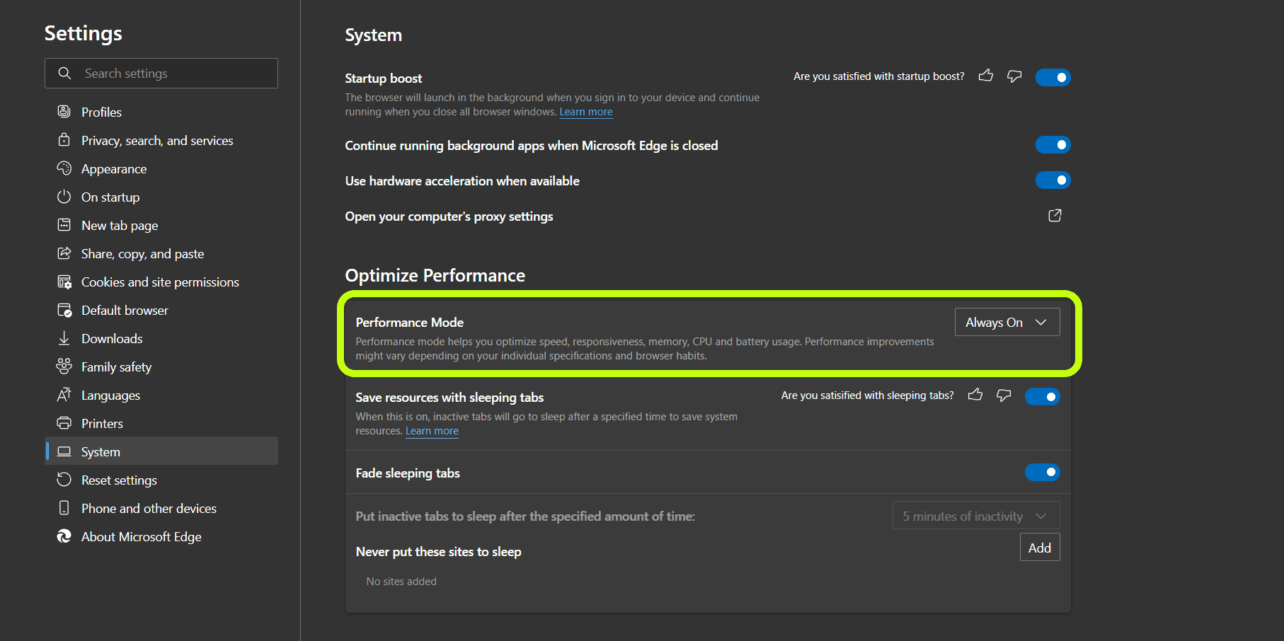Microsoft has released a test version of its Edge browser that includes a so-called Performance mode. This mode should make the browser more responsive in some situations.
Performance mode is designed to optimise speed, response times, memory usage, processor usage and battery consumption. According to Microsoft, the final improvements depend on the specifications of your computer and the way the end-user interacts with the browser.

Sleeping Tabs
Microsoft won’t say exactly what will change with performance mode. The company does say that the Sleeping Tabs timer will no longer work. Sleeping Tabs is a recently introduced feature where inactive tabs go into a kind of sleep mode after a certain time. Scripts running on the sleeping tabs are paused so that they no longer put a burden on the processor. When the tab is opened again, these processes pick up where they left off without reloading the page.
By default, a tab falls asleep after two hours of inactivity, although this time can be adjusted in the settings. Presumably, the new performance mode is an alternative that offers similar functionality to Sleeping Tabs, so it is not possible to use both functions simultaneously.
Edge canary
Users who want to try out the new performance mode need to download Edge canary, the insider version of Microsoft’s browser. Specifically, the 64-bit build of version 91.0.856.0 is needed. This is a controlled feature rollout, where the feature is not immediately visible to all users. Users who cannot find the feature, but would like to try it out, can use the following code:
--enable-features=msPerformanceModeToggle
Similar performance improvements in Chrome
Microsoft isn’t the only company making improvements to its browser to reduce CPU and memory usage. Last month, Google released Chrome 89, with some optimisations under the bonnet. A more recent update has reduced the load on the processor. Google is also working on a feature that can freeze tabs, much like Edge’s Sleeping Tabs.
